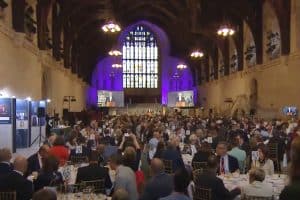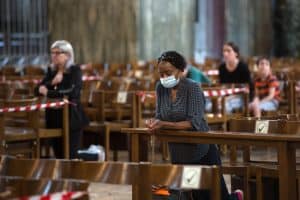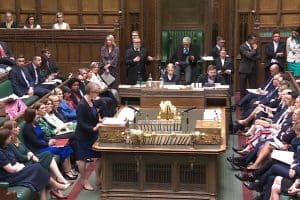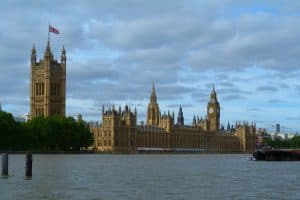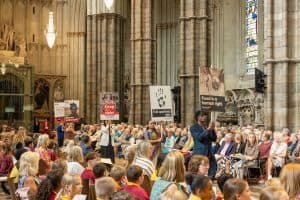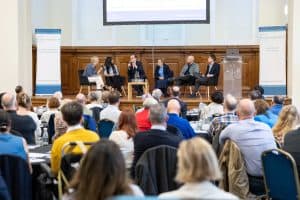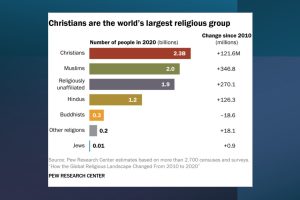By Catherine Pepinster
The funeral of Queen Elizabeth II takes place in Westminster Abbey on 19 September 2022. The order of service follows a traditional pattern but is notable for its inclusion of other faiths, other Christian denominations, representatives of charities and the NHS. The full order of service is here
When was Westminster Abbey last used for the state funeral of a monarch?
Not since George II’s death has there been a state funeral of a monarch at Westminster Abbey. Since then, the burials were moved to St George’s Chapel, Windsor, because there was no room for any more sovereigns to be buried in the Abbey. There was more burial space at Windsor.
But wasn’t the funeral of Queen Elizabeth the Queen Mother in Westminster Abbey in 2002?
Yes, but she wasn’t a reigning monarch. Like Camilla, she was a Queen Consort. And her funeral was called a ceremonial funeral. It was not in the top league of funerals.
So only reigning monarchs have state funerals?
No, Sir Winston Churchill, the prime minister during the Second World War, had a state funeral in St Paul’s Cathedral in 1965.
Who is in charge of the state funeral?
It’s a complicated set-up. The Dean of Westminster, Dr David Hoyle, is responsible for the ecclesiastical aspects. He will officiate. Westminster Abbey is what is called a Royal Peculiar, a church that answers only to the monarch regarding what happens there, rather than to anybody else within the Church of England, such as the Bishop of London, who oversees the Diocese of London.
The Earl Marshal, a role always filled by the Duke of Norfolk of the day, is the chief organiser and he liaises with Westminster Abbey, the government and the new king’s office, to ensure everything works and knits together. The government has major input — providing security, policing and other services. The final say over the monarch’s funeral, though, lies with the new monarch, now Charles III.
How long will it last?
The order of service shows that it will last an hour.
What is its overall intention?
To comfort those who mourn, to mark the life of the person who has died but above all to offer hope. As a Christian funeral, its message is that there is life after death, and that salvation comes from Jesus Christ who died, was buried, and then rose from the dead after three days.
Is this a standard funeral, just like a funeral of anybody else in the Church of England?
Yes … and no.
Its overall intention is the same. There are readings from the Bible and music, including hymns. The words are based on the Anglican funeral service, although it will be the committal and burial that will be the most traditional. The 1662 Book of Common Prayer only has the burial — other ceremonies come from more modern books.
There will be a sermon, a blessing and a commendation of the dead to God. The prayers will include the Lord’s Prayer, the words of which were recorded by the gospel writers as the words of Jesus. You would find all these in a Church of England funeral for anybody.
But the bell tolling to mark each year of the Queen’s life, the processions, the grandeur of the music, the references to the Queen’s standing, and the pronouncement of the late Queen’s styles and titles are the additions.
DETAILS OF THE ORDER OF SERVICE
Available in full here
Procession of religious representatives
This is unprecedented in the state funeral of a British monarch, who is also Supreme Governor of the Church of England. The involvement of 10 leaders of other faiths and many of other Christian denominations, who will lead the prayers, highlights the late Queen’s interest in, and commitment to, interfaith dialogue and Christian ecumenism.
Anglican clergy in attendance include two people who had special roles relating to the Church of England and the monarch: the Dean of the Chapels Royal, Dame Sarah Mulally, who is also Bishop of London, and the Dean of Windsor, David Conner, who will later lead the service of committal and burial at St George’s chapel, Windsor.
The royal family and the two choirs, of Westminster Abbey and the Chapel Royal, arrive last.
The service proper begins when the sentences are sung during the procession of the coffin through the Abbey. The Queen’s coffin has placed on it, as it had during the lying in state, the Imperial State Crown, worn by the Queen during part of her coronation celebrations and always at state openings of parliament. Also placed on the coffin are the orb, with its diamond cross, denoting that the world and its kings and queens are the dominion of Christ, and the sceptre, representing justice and mercy. The Queen was last linked with the orb and sceptre on Coronation Day, 1953 — she has not held them since that day.
The sentences
These sum up the Christian faith and its key belief in the resurrection. They are sung here to music by William Croft, except for Henry Purcell’s music for the funeral of Queen Mary II in 1695. They were sung at the funerals of Queen Elizabeth the Queen Mother in 2002 and Queen Elizabeth II’s husband, the Duke of Edinburgh, in April 2021.
The bidding
This sums up the reason for people to have gathered and something of the life of the Queen, her commitment to duty and her constant Christian faith.
Prayer after the bidding
This is the collect from the Church of England’s Order for the Burial of the Dead, from the 1662 Book of Common Prayer.
Hymn: The Day Thou Gavest, Lord, Is Ended
This was a favourite of Queen Elizabeth II, who chose all the hymns and readings for her funeral. But it is not a favourite of King Charles, who associates it with his days at Gordonstoun.
The First Lesson: From St Paul’s first Letter to the Corinthians, Chapter 15
Another part of the liturgy for the Burial of the Dead, from the 1662 Book of Common Prayer.
One of the most popular readings for funerals from the Bible, with its affirmation of the Christian belief in resurrection, and how Christ destroyed death by rising from the dead. Christians believe that there is life after death for followers of Christ
The Psalm
Psalm 42 is one of the most popular psalms put to music by church composers such as Herbert Howells and William Croft, but this version is a composition specially for this service by Judith Weir. It uses the translation of the Psalm by the Tudor Bible translator Miles Coverdale from 1540.
It is common in Christian churches to have two Bible readings, with a psalm, also from the Bible between them. The psalms are hymns, some of thanksgiving, others praise creation while there are also laments.
The Second Lesson: From the Gospel of St John, chapter 14
One of the most popular readings for Christian funerals, it offers hope — that where Christ goes , back to his Father in heaven after his ministry on earth, there will be a place for all his followers. It also confirms that Christ is the way to God and that he is God: “I am the way, the truth and the life”. Queen Elizabeth II had a profound trust in God and spoke often of following the teachings of Jesus Christ in her Christmas broadcasts.
Hymn: The Lord’s My Shepherd
The words are also those of Psalm 23 — and the hymn was known to be a favourite of the late Queen, sung to this tune, Crimond, which is also a nod to Scotland. It is a reminder of her marriage to the Duke of Edinburgh as it was sung at their wedding, held in Westminster Abbey.
The sermon: by the Archbishop of Canterbury, Justin Welby
The Archbishop of Canterbury is the principal leader of the Church of England, of which the Queen was Supreme Governor, a title that has now passed to King Charles III on his accession. The Church of England continues to be the established Church in England, and has been since the time of Henry VIII.
Anthem
This is taken from Songs of Farewell by Hubert Parry, a set of six motets written between 1916 and 1918. This one takes it text from a poem by Henry Vaughan, a Welsh metaphysical poet and the choice is therefore a nod to Wales within the funeral service.
Prayers
The prayers follow a common pattern of Church of England funeral services, with prayers of thanksgiving for the life of the departed, prayers for those who mourn and prayers asking to live in the light of eternity.
The choice of readers of the prayers is another sign of the late Queen’s desire to make her funeral an example of ecumenical friendship with leading figures from different Christian denominations giving them, alongside the two most senior Anglican clergy after the Archbishop of Canterbury — the Archbishop of York and the Bishop of London.
The final prayer is by John Donne, poet and a former dean of St Paul’s Cathedral during the 17th century.
Psalm: O Taste and See that the Lord Is Good
Just two lines from Psalm 34, verse eight, put to music by Ralph Vaughan Williams for the Queen’s Coronation in 1953. Vaughan Williams was taught by Hubert Parry, whose music was played earlier, and is considered one of the greatest twentieth century composers.
Prayer: The Lord’s Prayer
This is the most popular and most frequently said of Christian prayers. Said at every church service, whether on Sundays, or a marriage, christening or funeral. It is based on the words of Jesus, recounted in the Gospels of Matthew and Luke, two books in the Bible’s New Testament, when his followers asked him: teach us to pray.
Hymn: Love Divine All Loves Excelling
Another of the late Queen’s favourite hymns and written by the Methodist John Wesley
The Commendation
This is the concluding part of the funeral where prayers are said to hand over the soul of Queen Elizabeth to God.
The second of the prayers, Go forth, O Christian Soul, from this World, was also said at the funeral of the Duke of Edinburgh in April 2021, but in a slightly different translation. It is based on an ancient Catholic prayer, the Profiscere, which formed part of Elgar’s Dream of Gerontius, and is often said as part of the Last Rites, prayers for the dying.
Anthem
Another piece of music specially commissioned for this funeral service by Sir James MacMillan, with the words of St Paul’s Epistle to the Romans, one of the later books of the Bible. Another verse which reflects Elizabeth II’s deep faith in God.
The Blessing
The focus shifts for a moment here to the living, and that God is with them.
Last Post and Reveille
The bugle calls which sound the end of the day and the start of the new one for the army, of which Elizabeth II was commander in chief. Reveille comes second here — traditionally used to wake up military as sunrise – here used as a reminder that after death, comes resurrection.
National Anthem
Sung with its new words, God Save The King
Lament
The bagpipes are a reminder of Queen Elizabeth’s strong links with Scotland, where she died.
Procession
The coffin is processed from the church, before a further procession through London and then departure to Windsor for the committal and burial
Catherine Pepinster is the author of Defenders of the Faith: the British Monarchy, Religion and the Next Coronation, published by Hodder and Stoughton






